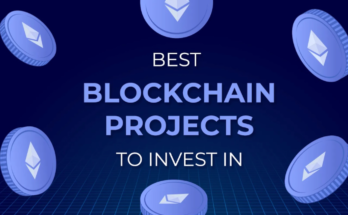Cryptocurrency is evolving fast, and 2025 is shaping up to be another groundbreaking year. Among the many ways to earn passive income in crypto, two methods stand out—crypto staking and yield farming. But which one is better for your digital investment strategy this year?
In this comprehensive guide, we’ll break down the differences, advantages, risks, and future potential of both staking and yield farming, helping you decide where to put your crypto for the best returns in 2025.
What Is Crypto Staking?
Crypto staking is the process of locking up your cryptocurrency to support the operations of a blockchain network—usually one that uses Proof of Stake (PoS) or a variation like Delegated Proof of Stake (DPoS). In return, you earn staking rewards in the form of additional coins.
🔐 How It Works:
- You hold coins in a supported wallet or staking platform.
- Your assets are locked for a specific period.
- You earn rewards for helping validate transactions or secure the network.
💡 Example:
Staking Ethereum (ETH) on the Ethereum 2.0 network is one of the most popular forms of staking in 2025.
What Is Yield Farming?
Yield farming (also known as liquidity mining) involves lending or providing liquidity to decentralized finance (DeFi) protocols in exchange for interest or yield rewards. This method is popular among DeFi users looking to maximize returns.
⚙️ How It Works:
- You deposit crypto into a liquidity pool (e.g., on Uniswap, PancakeSwap).
- The pool enables trading or lending functions.
- You earn fees, tokens, or APY-based rewards depending on your contribution.
💡 Example:
Providing liquidity to a USDC-ETH pool on a DeFi exchange may earn you trading fees and governance tokens like UNI or CAKE.
Staking vs Yield Farming: Key Differences
Let’s compare crypto staking and yield farming side-by-side in 2025:
| Feature | Crypto Staking | Yield Farming |
|---|---|---|
| Complexity | Simple and beginner-friendly | Complex and riskier |
| Risk Level | Low to moderate | High |
| Returns | Moderate (4–10% APY avg) | High (10–200%+ APY possible) |
| Token Lock-up | Usually required | May have flexible withdrawal |
| Main Purpose | Secure blockchain | Provide liquidity, earn returns |
| Volatility Impact | Lower risk of impermanent loss | High risk of impermanent loss |
Pros and Cons of Crypto Staking in 2025
✅ Pros:
- Stable returns: Predictable APY rates.
- Lower risk: Suitable for long-term holders.
- Eco-friendly: PoS is more energy-efficient than PoW.
- Supports the network: You’re helping blockchain sustainability.
❌ Cons:
- Lock-in periods: Funds may be inaccessible temporarily.
- Lower APY: Compared to aggressive yield farming strategies.
- Validator risks: Slashing penalties if you stake with unreliable validators.
Pros and Cons of Yield Farming in 2025
✅ Pros:
- High potential rewards: Some pools offer triple-digit APYs.
- Flexibility: Many protocols allow quick withdrawal.
- Token bonuses: Earn additional tokens or governance rights.
❌ Cons:
- Impermanent loss: A risk when token values change disproportionately.
- Smart contract vulnerabilities: Bugs can drain liquidity pools.
- Rug pulls: Some DeFi projects are scams or disappear after collecting funds.
Most Popular Crypto Staking Coins in 2025
If you’re considering staking in 2025, here are top coins for safe crypto staking:
🔹 Ethereum (ETH)
- Post-Merge Ethereum 2.0 staking remains dominant.
- Over 30 million ETH staked as of 2025.
🔹 Cardano (ADA)
- Known for its strong community and secure staking system.
🔹 Solana (SOL)
- High throughput makes it attractive, though faced outages in past years.
🔹 Polkadot (DOT)
- Offers nominated proof-of-stake, giving users better control.
🔹 Avalanche (AVAX)
- Popular for eco-friendly consensus and rising DeFi ecosystem.
Best Yield Farming Platforms in 2025
DeFi is still booming in 2025. Here are top yield farming protocols to explore:
🔸 Uniswap v4
- The upgraded version with auto-compounding, better gas efficiency, and layer-2 support.
🔸 PancakeSwap
- Still a favorite for Binance Smart Chain users with new farming strategies.
🔸 Aave
- Offers high yields via lending pools—especially on newer Layer-2 chains.
🔸 Curve Finance
- Focuses on stablecoin yield farming with low risk and high volume.
🔸 Balancer
- Provides innovative pools with flexible ratios and boosted APYs.
Which Is More Profitable in 2025?
It depends on your risk tolerance and investment goals.
- If you prefer safe, long-term income, go with crypto staking.
- If you’re chasing high short-term gains and can handle risk, yield farming may be your move.
📈 Estimated Returns:
- Staking ETH: 4–7% APY
- Yield Farming in DeFi Pools: 10–150% APY (high volatility)
Safety Tips: Avoiding Scams and Pitfalls
No matter which method you choose, always practice crypto security. In 2025, scams have become more sophisticated.
🔐 Tips:
- Use hardware wallets to store assets when not farming/staking.
- Avoid shady, unknown DeFi projects promising “1000% APY overnight.”
- Audit the smart contracts you interact with.
- Use multi-sig wallets if farming in a group.
Tax Considerations in 2025
Yes, both staking and yield farming rewards are taxable.
- Staking rewards are treated as income when received.
- Yield farming often triggers capital gains on token swaps and liquidity movements.
Make sure to use tools like Koinly, TokenTax, or CoinTracker for tracking your transactions and calculating your crypto tax in 2025.
Future Trends: What’s Next for Staking and Yield Farming?
The crypto landscape is always shifting. Here’s what’s shaping staking vs yield farming in 2025:
🔮 For Staking:
- More Layer-2 staking options.
- Institutional staking on platforms like Coinbase Custody.
- Staking-as-a-service (SaaS) for everyday investors.
🔮 For Yield Farming:
- AI-driven DeFi strategies.
- Automated vaults like Yearn V3 gaining traction.
- Enhanced risk assessment tools embedded in dApps.
Crypto Staking vs Yield Farming: Which One Should You Choose?
Let’s break it down based on your profile:
| Investor Type | Recommended Strategy |
|---|---|
| New to crypto | Staking |
| Risk-taker | Yield Farming |
| Long-term investor | Staking |
| Looking for quick ROI | Yield Farming |
| Low-maintenance seeker | Staking (auto-compounders) |
| Advanced DeFi user | Yield Farming with tools |
You can also combine both in your portfolio—use staking for stable income and allocate a smaller portion to high-yield farming.
Final Verdict: Crypto Staking vs Yield Farming 2025
Both staking and yield farming offer compelling ways to grow your crypto in 2025. They each come with their pros, cons, and ideal use cases.
🏁 Quick Summary:
- Crypto staking is safer, more predictable, and ideal for long-term growth.
- Yield farming is riskier, more complex, but can offer much higher returns.
- Your choice should reflect your goals, knowledge, and risk tolerance.
Whatever path you choose, educate yourself, use trusted platforms, and diversify your investments. The world of decentralized finance is full of opportunity—just make sure you’re equipped for the journey.




